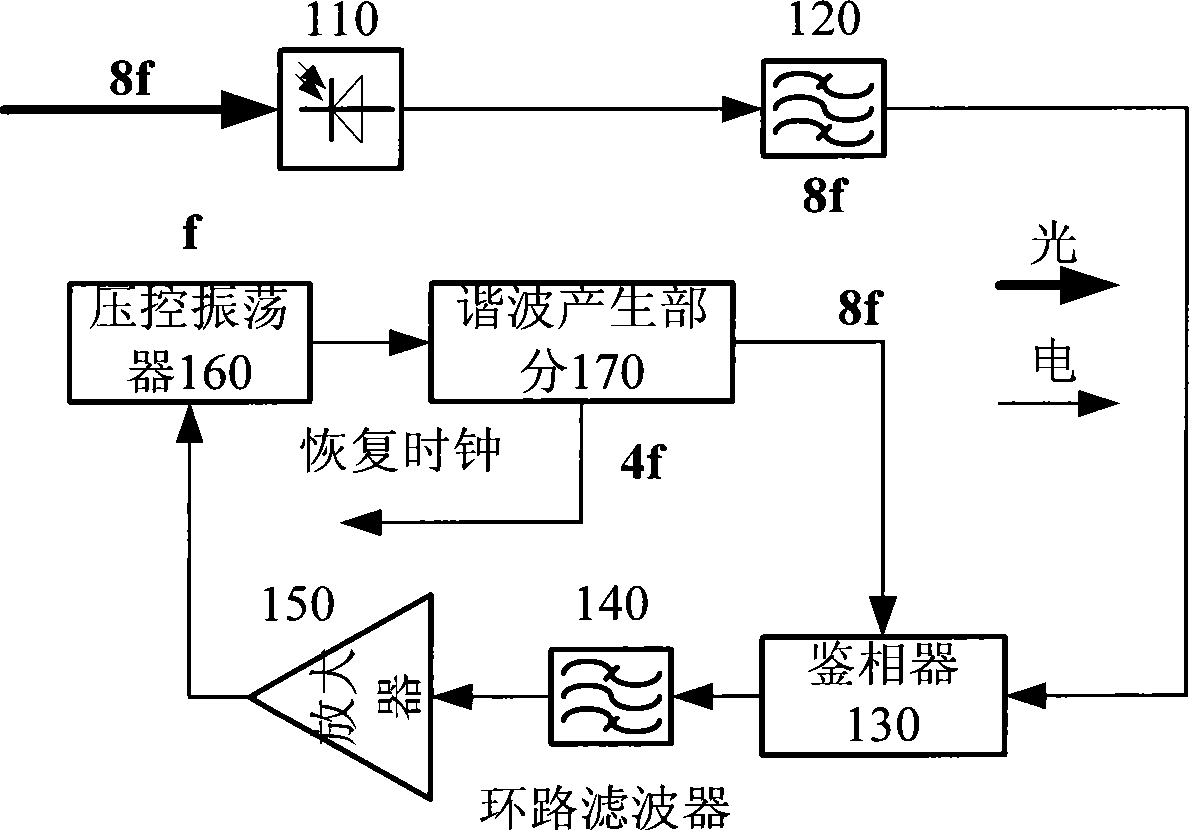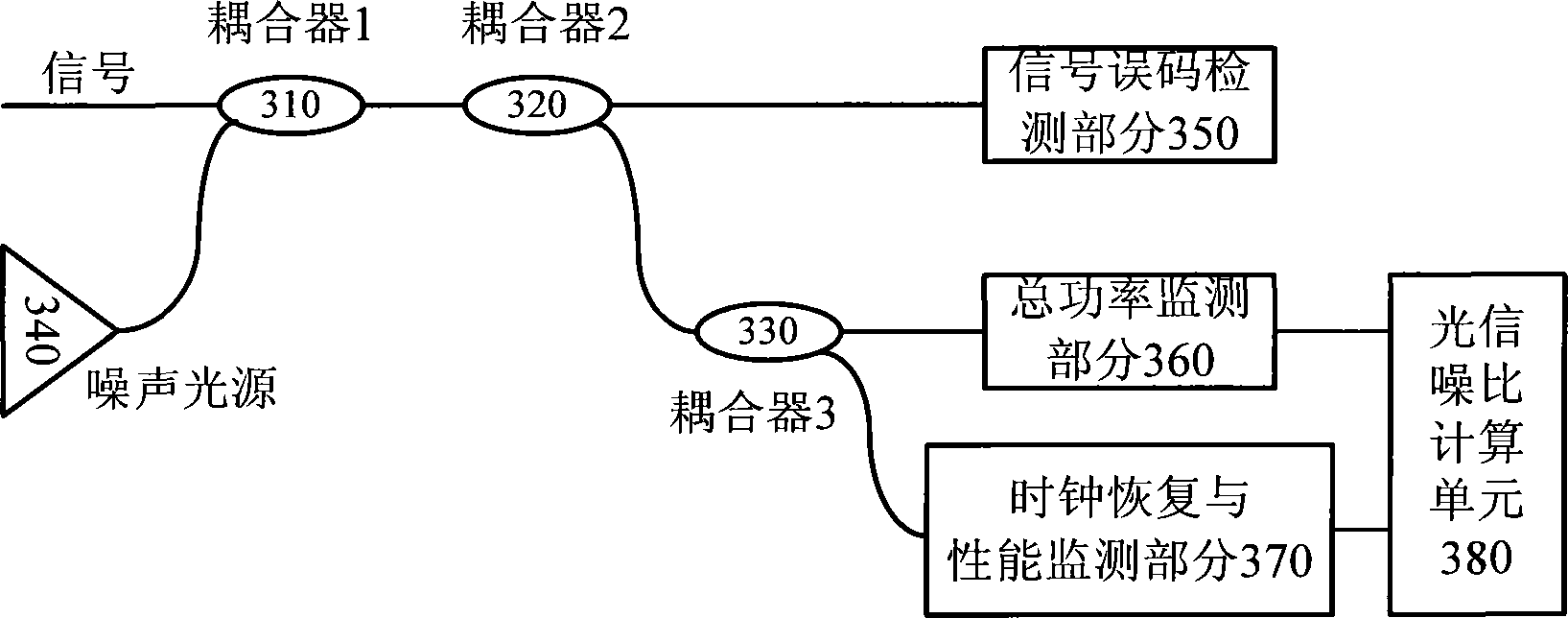Method and device for photoelectrical hybrid clock recovery and optical transmission signal performance monitoring
A clock signal and signal technology, applied in optical fiber transmission, transmission monitoring/testing/fault measurement system, electromagnetic wave transmission system, etc., can solve problems such as inaccurate OSNR monitoring, large system size, and no FEC chip
- Summary
- Abstract
- Description
- Claims
- Application Information
AI Technical Summary
Problems solved by technology
Method used
Image
Examples
Embodiment Construction
[0032] The present invention solves the above problems by combining clock recovery, and introduces an electro-optic modulator for frequency conversion, so that signal processing is performed at a lower frequency, thereby reducing the requirements for devices. In addition, in order to overcome the polarization-sensitive characteristics of the electro-optic modulator, A polarization diversity scheme is proposed to solve it.
[0033] According to one aspect of the present invention, there is provided a method for simultaneously realizing clock recovery of high-speed digital signals and performance monitoring of transmission signals based on photoelectric hybrid, which is characterized in that it includes:
[0034] The electro-optical modulator is used at the receiving end to reduce the frequency of the clock signal, thereby reducing the bandwidth and rate requirements for post-processing devices.
[0035] The performance of the optical transmission signal is monitored by using th...
PUM
 Login to View More
Login to View More Abstract
Description
Claims
Application Information
 Login to View More
Login to View More - R&D
- Intellectual Property
- Life Sciences
- Materials
- Tech Scout
- Unparalleled Data Quality
- Higher Quality Content
- 60% Fewer Hallucinations
Browse by: Latest US Patents, China's latest patents, Technical Efficacy Thesaurus, Application Domain, Technology Topic, Popular Technical Reports.
© 2025 PatSnap. All rights reserved.Legal|Privacy policy|Modern Slavery Act Transparency Statement|Sitemap|About US| Contact US: help@patsnap.com



